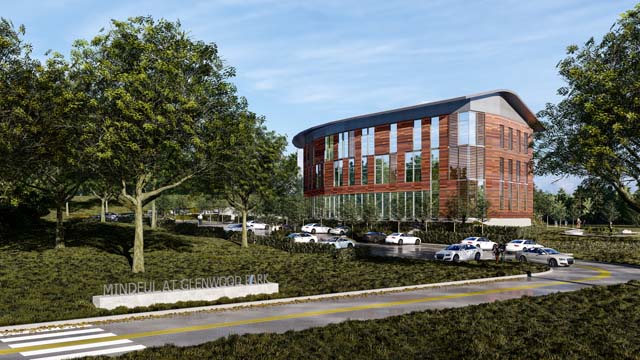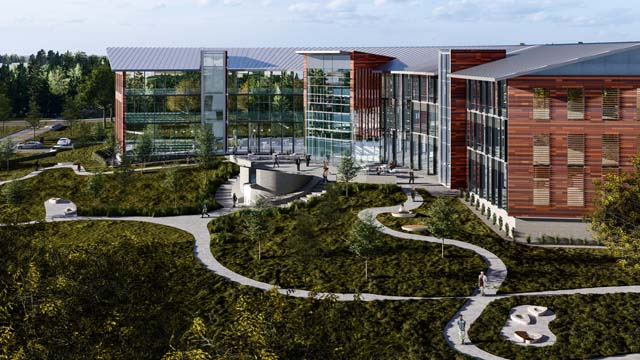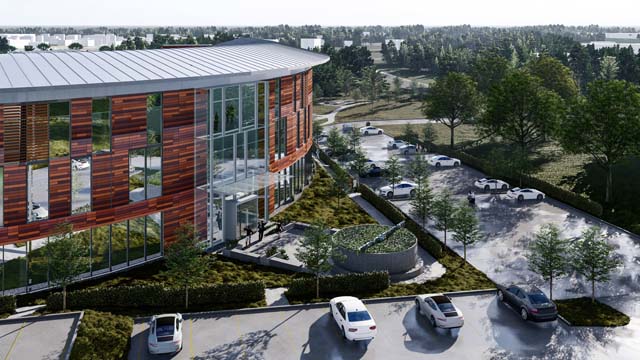How COVID-19 Is Changing Behavioral Healthcare Facility Design
Mental and behavioral health are as vital to our collective well-being as our physical health. While the last decade has seen improved availability and delivery of behavioral healthcare, COVID-19 has brought mental health and wellness into sharper focus. As a result, we’re seeing the emergence of new treatment modalities, innovative delivery models, and reimaged environments in which care is provided.
In turn, architects are embracing new approaches to better align facility design with demand for and delivery of behavioral healthcare. Here are a few ideas on how COVID-19 is changing behavioral health facility design.
Taking patients outdoors
Healthcare facilities, on campus and in the community, are reimagining their exterior areas, with many turning to the outdoors for therapy sessions. The benefit is two-fold: fresh air can favorably impact mood, while also reducing the risk of airborne contamination.
Much like families that have taken to the outdoors to socialize and play, behavioral health facilities can incorporate the outdoors into the therapeutic milieu with such features as healing gardens, meditation oases, yoga spaces, and walking paths to provide areas for activities that are well regarded as beneficial to emotional, spiritual, and mental well-being.
“Inpatient facilities must focus on creating a sense of consistency and structure that taps into the human need for clarity and calmness,” says Dr. Brian Dixon, a psychiatrist based in Fort Worth, Texas. For example, Dixon has designed a therapeutic oasis, called Mindful at Glenwood Park in Fort Wort, Texas, for teaching and treating mental healthcare. The proposed facility design, which is conceptual, is located in a park setting to accommodate quiet retreat areas and outdoor walking therapy appointments, all of which comply with COVID-19 social distancing requirements.
Dynamic environmental design that incorporates both interior and exterior elements taps into the human need for serenity, which support patient healing. Our charge as designers is to ensure the design supports new, effective healthcare delivery protocols during and post-pandemic.
Impact of telehealth
Healthcare consulting firm Frost & Sullivan reports that in 2020, “the telehealth market is likely to experience a tsunami of growth, resulting in a year-over-year increase of 64.3 percent.” In the behavioral health sector, demand for telehealth in response to the pandemic has been a tipping point, with online portals, Zoom, and other technological platforms making it easier to connect directly with the patient.
As telehealth becomes mainstream, we anticipate space allocated to clinical areas will be realigned for virtual visits, digital monitoring, and wellness-focused amenities that benefit both patients and staff. “Because telehealth is, by design, remote, it decompresses a packed waiting room and promotes a more individualized patient experience—for those who prefer to be seen in your office as well as those who dial in,” says Dr. Dixon.
It’s also important that facilities include dedicated, secure HIPPA-compliant telehealth suites that include a high-resolution A/V system, digital monitoring equipment, EMR access, and secure, robust internet connectivity, as well as ergonomic seating and task lighting.
Looking ahead to resiliency and flexibility
Mental healthcare practitioners are preparing for an onslaught of patients who had to postpone care when the COVID-19 crisis began. Additionally, the effects of isolation from sheltering in place can exacerbate mental health issues.
COVID-19 patients are also facing mental health and neurological disorders, some of which are attributed directly to the virus’ effects on the brain. Among hospitalized COVID-19 patients, experts are seeing high levels of depression.
Healthcare workers are also facing high rates of post-traumatic stress disorder and depression. A recent study published in the Journal of the American Medical Association reported that more than 70 percent of those healthcare workers serving COVID-19 patients suffered from anxiety, insomnia, and other depressive symptoms.
As a result, hospitals are evaluating how to plan for the expected surge in behavioral health patients, which includes everything from converting empty shell space and building expansion space as quickly as possible to triaging psychiatric care in the emergency department. In Texas, several state hospital campuses are being redeveloped for new psychiatric hospital facilities in Austin, San Antonio, Rusk, and Hill Country.
While some of these facilities were already in the works, the design industry now has an opportunity to proactively address the many challenges brought to light by the pandemic and focus on flexibility, technology integration, and resilient design to optimize functionality for another 50 years, regardless of what the future holds.
Travis Leissner, AIA, is vice president and director of strategy at Hoefer Wysocki (Dallas). He can be reached at Travis.Leissner@hoeferwysocki.com.




